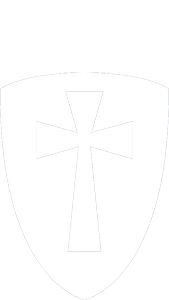Internationally recognized leadership expert, speaker, and author John C. Maxwell is quoted as saying, “Change is inevitable, Growth is optional.” This quote is true in most sectors of society; however, it is especially true in the realm of education. As society is quickly embracing new technological changes, educators are swiftly trying to bridge the gap between how the education of the next generation used to be done, and how, through the use of technology, education can be done, both now and in the future. The smooth blending of academics and technology in the classroom has placed a new emphasis on the field of Educational Technology, as schools seek the incorporation of instructional technologies that will enhance the learning process and foster academic achievement.
Over the past several years, Cambridge Christian School has actively implemented several instructional technologies in the classroom as a means of developing fully prepared college-bound students and 21st century learners and leaders. The introduction of each piece of instructional technology was carefully contemplated to make sure that it was in keeping with the school’s mission. As a result, the accomplishing of the school’s mission is being greatly strengthened by the inclusion of these instructional technologies in the CCS learning environment.
CCS teachers are benefiting from this technological revolution. Teachers can now connect their Microsoft Surface 3 devices wirelessly to their 60″ classroom television or connect their Apple iPad tablet wirelessly to their television in order to display PowerPoint presentations, videos, diagrams, or other curricula for their classes. No longer are the teachers “chained,” because of annoying connection wires, to their desk or podium to use their devices. Teachers are now free to engage students from anywhere in the classroom while carrying their light-weight devices to help enhance the day’s lesson.
“I love that it [the Surface 3] is a combination of a laptop and a tablet! I feel that I have the benefits of both with very few drawbacks. I have also been amazed at how the portability of the Surface 3 has impacted my teaching. The fact that it comes with me everywhere means that I have more time to “play” with apps, software, etc.,” states Mrs. Lisa Saviola, the middle school science, writing lab, and robotics teacher. “Because I now have technology at my fingertips at all times, it has made me not only more inclined to look for ways to include technology in my classroom, but I am excited to do so!”
When workbooks or worksheets are the vehicles for learning in the classroom, technology can still help the teacher engage everyone in the classroom while seamlessly completing an activity. Through the use of an “Elmo” Document Camera or by using an iPad and iPad Document Stand, teachers in all grade levels can conduct their lessons by displaying handwritten work on their television screens for all to see. Teachers even have the capability of video recording their session or taking still images of the pen and paper activity for future use.
CCS students are also benefiting from the infusion of instructional technology into the classroom. In grades K-3 and in the lower school Spanish classes, teachers can now have their students respond to questions during the teaching of their lesson by using student response keypads. As the teachers use a PowerPoint presentation to present the day’s lesson, they can have the students respond to checkpoint questions throughout the lesson. “The student response system increases student engagement and productivity. Kindergarten through sixth grade students have all expressed how much they enjoy using it,” says Mrs. Merrie Smith, lower school Spanish teacher.
The Qomo Student Response System keeps track of every student’s response and provides the teacher with a multitude of reports that helps the teacher evaluate the class’s comprehension of the lesson. This information can then be used to target an individual student in order to create a plan for further review of the material or to gauge the depth of comprehension for the whole class. Through the use of the student response system, every student gets to demonstrate their understanding throughout the course of the lesson.
In addition to the student response system, students in grades K-3 have access to 24 iPads which are stored on a mobile cart. Under the direction of their classroom teachers, students can use apps and websites that help them practice what they are learning in reading, math, science or any other subject area. Students in grades 4-6 have access to their own set of devices. Grades 4 and 5 share a mobile cart that contains 18 HP Stream laptop computers, while the 6th grade students have their own mobile cart of 18 HP Stream laptops. Mrs. Janelle Morgan, 6th grade teacher declares, “Our sixth graders love them, and so do we! We have been able to do so much with them! We use them almost daily for research, instructional and review activities, teaching MLA formatting and keyboarding for projects and many other things.”
The middle school (MS) students are also getting in on the act of incorporating technology into their academics. MS students are regularly issued a school laptop, to help them with their daily school work, from the set of 24 laptops that are available on the MS laptop mobile cart. Stephen Campbell, MS history teacher testifies, “I use the laptop cart as a way to expand my curriculum and instruction in the classroom. The laptops help promote self-discovery and enhance the students’ digital skillsets. The students enjoy the opportunity to use the internet in the classroom and look forward to the moments when they get to use the laptops.”
Instructional technology is not limited to the physical devices that teachers and students use to fuel academic progress. To have a full appreciation of instructional technology requires recognizing that it also embraces the academic software and systems that aid in the transference of knowledge. CCS continues to make great strides in the adoption of academic software and systems that are designed to organize, manage, and facilitate academic success. Some of the academic software and systems that have recently been integrated into the CCS curricula and learning environment include Microsoft Office 365, Microsoft OneNote, and Moodle.
Through the use of Microsoft Office 365, upper school students and teachers have access to the latest Office products, as online versions or desktop versions, which include Word, PowerPoint, Outlook, Calendar, and OneDrive for Business. This platform allows all teachers and students to share files and documents seamlessly, regardless of the device that they are using. CCS upper school students can take their learning anywhere and work on it at any time because their access to Office 365 is available on their personal devices that they bring to school, on their desktop computer that they have at home, and on any internet-connected device.
“The OneNote program offers great potential for helping students organize and save information with the added feature of teacher access to whatever students write in the class folder,” explains Miss Elizabeth Riley, high school (HS) English teacher. “Now that students are more comfortable with the technology, I’m excited to use it more efficiently to help students construct and document their learning in the variety of ways that OneNote provides.” Mrs. Lisa Saviola adds, “I am just learning to use OneNote in conjunction with Office 365, but I can already see how it is going to make organization and collaboration so much easier.”
While OneNote offers teachers and students a means to organize and collaborate together, Moodle is an entire Learning Management System that provides numerous methods for students to demonstrate their learning and academic skills. Students can work on activities online and submit their responses back to their teachers for evaluation or grading. Mr. Brandon Rust, HS science teacher, declares, “Moodle has helped streamline the process of assigning and turning in homework. It provides the students with key organizational skills and allows for them to take responsibility for how they handle their assignments. Moodle allows Cambridge to help students begin to understand college level responsibility.”
CCS continues to embrace the use of instructional technology as a means of enhancing the learning process and fostering academic achievement. As the realm of education continues to undergo changes in the delivery of knowledge to the next generation, CCS is also keeping pace with the latest instructional technology tools that are facilitating the development of 21st century learners. As John C. Maxwell stated, “Change is inevitable,” and Cambridge Christian School is changing and growing with the times.
813-872-6744






